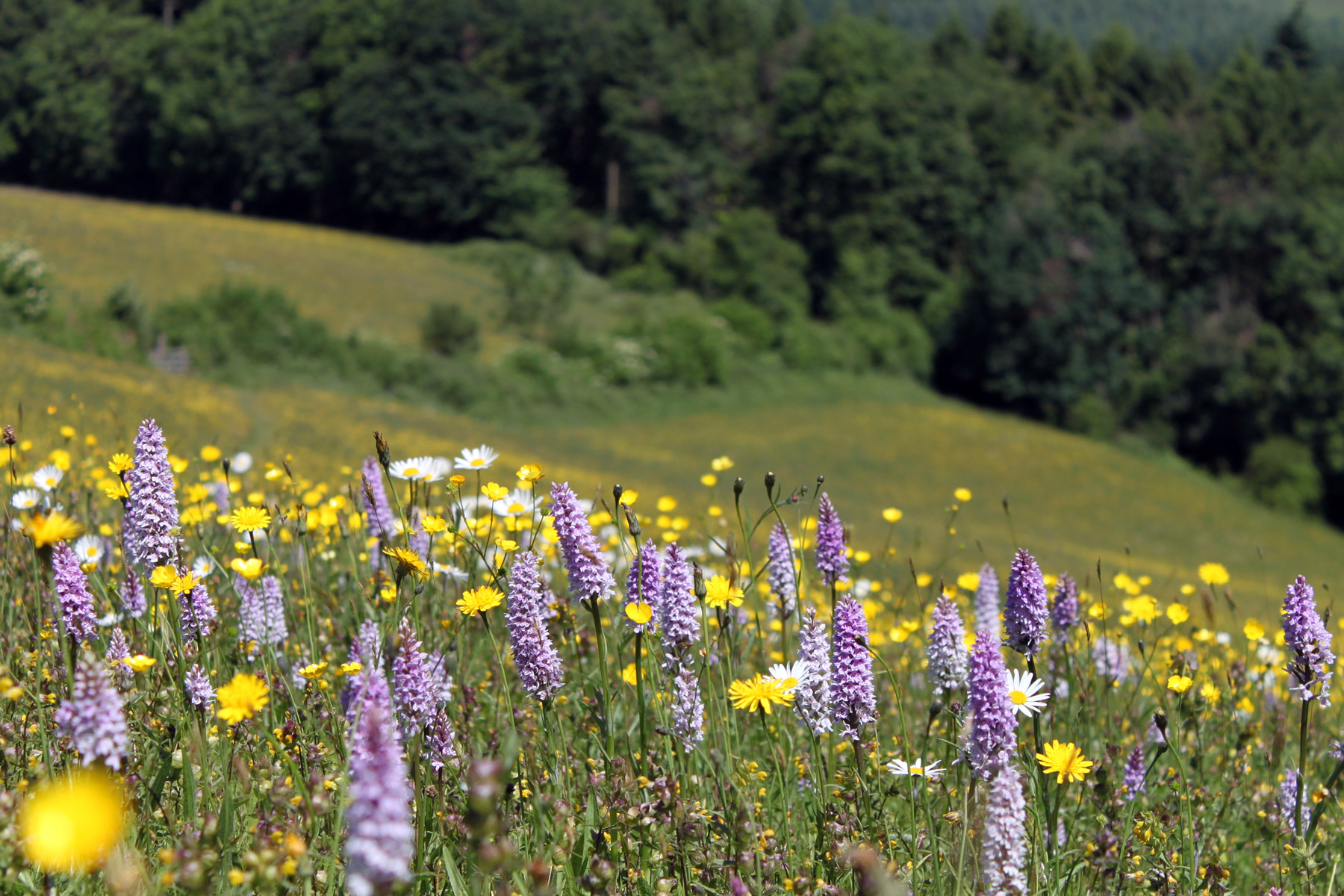With April now upon us you should have all spotted those little yellow rattle seedlings coming up. Surveying season will be upon us before we know it and we are working up a series of summer identification training events. Dates, locations, and timings will follow shortly but read on to find out how to get involved even if you don’t have a meadow of your own and are not part of one of our ongoing projects.
We are interested in the whole host of creatures that meadows support and with this in mind you can find out below about an upcoming bumblebee recording webinar training event. This month you can also catch up on the latest events in our Meadows, Mosaics and Mitigating Climate Change series, get involved in a cowslip survey project and more.
Upcoming events:
Thursday 14th April 6:00 – 8:00pm – Introduction to bumblebee recording and the Beewalk citizen science recording scheme with the Bumblebee Conservation Trust
The Bumblebee Conservation Trust are running an online webinar in collaboration with Monmouthshire Meadows Group covering how to set up and conduct a Beewalk to record bumblebees. The event is open to all and you can book on here.
Thursday 28th April 1:30 – 3:30pm – Ice Age Ponds: Landowner Information Day with Herefordshire Wildlife Trust at Moccas Park
This is an event aimed at farmers, landowners and communities who may have existing, or filled in, (‘Ghost’) Ice Age Ponds on land under their control. You can find more details and register for the event here.
Saturday 14th May – Wood Pasture Mosaics at Moccas Hill Wood courtesy of James and John Hughes
The fourth event in our Meadows, Mosaics and Mitigating Climate Change series discussing Wood Pasture will be at Moccas Hill Wood courtesy of Natural England and James and John Hughes of Pentre Farm, Dorstone. Speakers to include Jeremy Dagley (Wood Pasture and Parkland Network) and Geoff Newman and Tom Simpson (Natural England). If you are bemused by the array of different ways to create and restore a mosaic of trees and pasture this event is for you. Look out for the invitation and bring along your design ideas and queries to discuss on May 14th. Booking opens soon.
Catch up:
Shelterbelts and “Living Barn” Wood Pasture Mosaics courtesy of Rich Thomas
On Thursday 17th March we held the third event in our Meadows, Mosaics and Mitigating Climate Change series, kindly hosted by Richard Thomas. The event focused on the theory and practicalities of trees and shelterbelts on farms and how these can be used to support and enhance grasslands and grazing systems. You can read a short review of the event and access speaker Sam Hollick’s slides on our website.
Summer Training Days:
We will soon announce our list of summer training days which we know will be very popular including;
Rapid plant monitoring assessment training Grass identification day
Bumblebee identification day.
Priority will be given to those who are about to restore, or who have recently restored an area of species rich grassland, however we will also offer out places to anyone without a meadow of their own who is happy to be buddied up with a local meadow owner to help them with their surveying. The main commitment is to do the rapid plant monitoring assessment on 10 quadrats in each restored meadow once a year in June or July and to provide records to Herefordshire Meadows. The simplified BEEWALK method for bumblebee recording is a commitment to walk a transect, usually across several fields including the restored meadow once or twice each summer and submit the records to the Bumblebee Conservation website under Herefordshire Meadows account.
We are looking for people who are happy to do either or both of these surveys. If you’d like to share the excitement of following a meadow restoration year by year as it gets more flower rich please get in touch with either Caroline (caroline.hanks@farming4wildlife.co.uk) or Rory (rory_johnson9691@hotmail.co.uk) now and we can look at matching you with a meadow near you and reserving training spaces.
Stewardship payments for species rich grassland:
Do you have an area of already species rich grassland? If the answer is yes, you may well be eligible for the Countryside Stewardship (CS) option GS6: Management of species-rich grassland. To be eligible to apply your field will first need to be surveyed and added to Natural England’s Priority Habitats Inventory. Unfortunately it’s already officially too late to add any more fields to the inventory for this year’s CS deadline in July 2022. The next deadline for submissions to the Priority Habitats Inventory is February 2023 for 2023 CS applications. So we encourage you to get in touch with us and book in now for a survey this summer so that you have everything in place for next year.
Get Involved:
Plantlife Cowslip Survey
Cowslips are one of our best-known spring flowers appearing in pastures and along banks in April and May. However, as with many of our wildflowers they are being threatened by the loss of suitable habitat across our countryside. Plantlife are running a project to assess the health of our cowslip populations and they need your help. You can find out how to get involved here.
The effect of shelterbelts
Below is a diagram that was presented during our shelterbelts event last month showing the impact vegetation can have on wind flow.
Follow us:
We now have Facebook, Instagram and Linkedin accounts. Please like and follow us. Herefordshire Meadows Team
